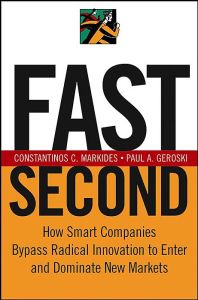
Fast Second
How Smart Companies Bypass Radical Innovation to Enter and Dominate New Markets
Recommendation
Constantinos C. Markides and Paul A. Geroski face a curious challenge: They have a lot of data to support their claim that the way to make big profits, if you’re quick enough, is to be the second company to take an innovation to market. However, the myth of the first mover – the idea that being first to market is the way to make money – is pervasive enough that they have to spend a lot of time convincingly debunking it. They also show the challenges and risks of trying to become a successful “fast second.” The authors explain the complicated, almost organic, interaction among innovators, competitors, markets and consumer demands that tug at the marketplace. They do a fine job of documenting the collective act of creation. getAbstract recommends this book to those who want to rethink their strategies for innovating or entering new markets. The possibilities of being a second mover will appeal to anyone who is interested in innovation, planning, new product marketing, or social and economic change.
Summary
About the Authors
Constantinos C. Markides is a professor of strategic leadership at the London Business School, and wrote All the Right Moves and other works. Former LBS economics professor Paul A. Geroski chairs the U.K.s Competition Commission.








Comment on this summary